39+ Sample Faculty Meeting Minutes
-
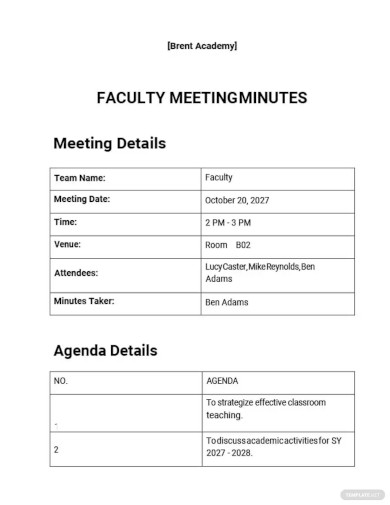
Faculty Meeting Minutes Template
download now -

Staff Faculty Meeting Minutes
download now -
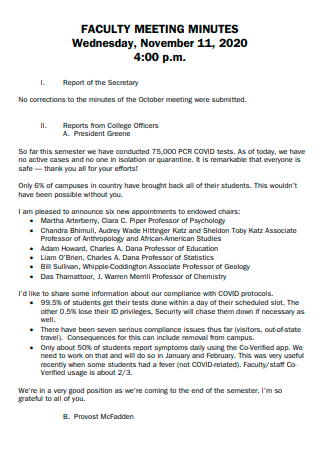
Basic Faculty Agenda Meeting Minutes
download now -
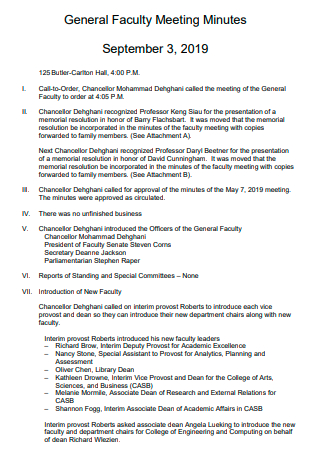
General Teacher Faculty Meeting Minutes
download now -
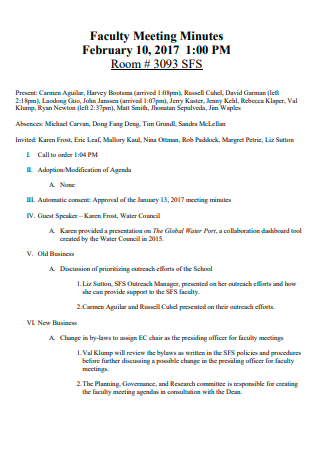
Printable Tagalog Faculty Meeting Minutes
download now -
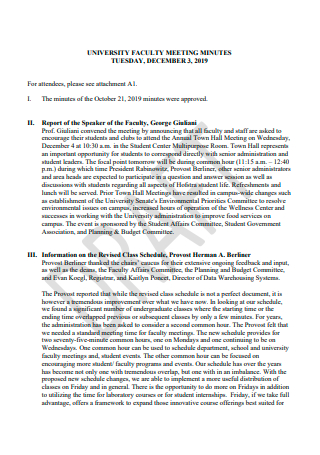
Draft Faculty Amherst Meeting Minutes
download now -
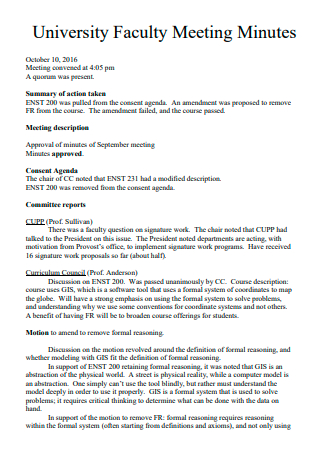
University School Staff Faculty Meeting Minutes
download now -
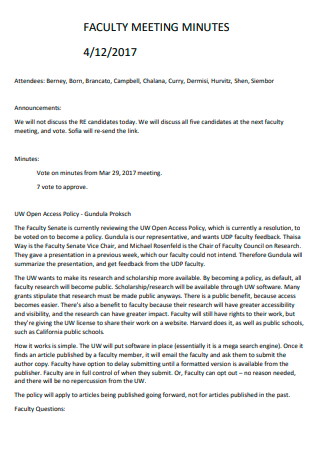
Faculty Students Meeting Minutes in PDF
download now -
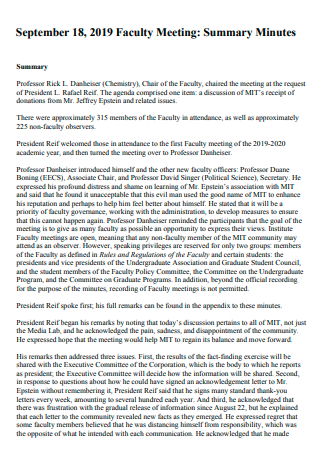
Faculty Meeting Summary Minutes
download now -
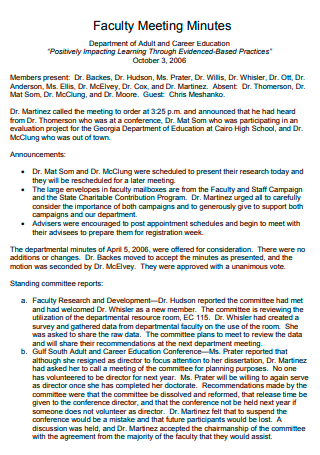
Faculty Meeting Minutes Example
download now -
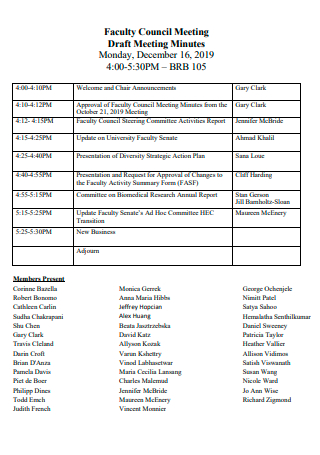
Faculty Council Meeting Minutes
download now -
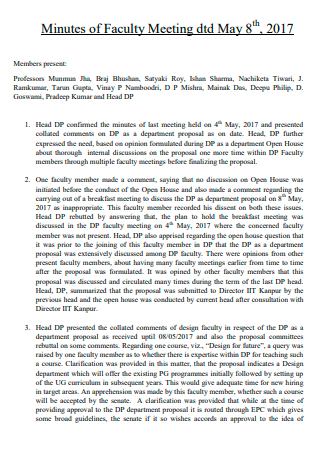
Standard Faculty Meeting Minutes
download now -
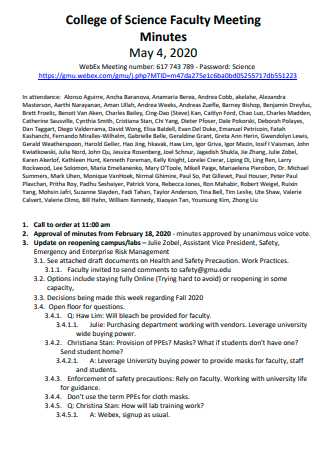
College of Science Faculty Meeting Minutes
download now -
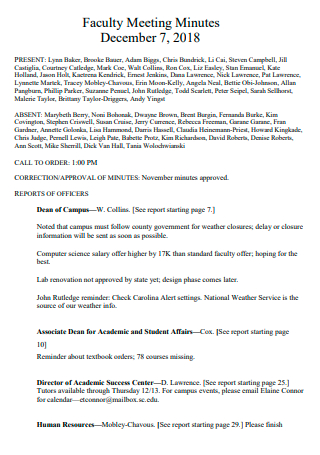
Formal Faculty Meeting Minutes
download now -
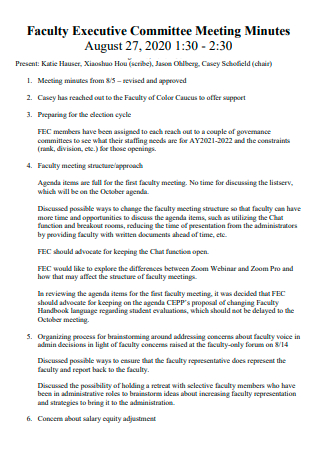
Faculty Executive Committee Meeting Minutes
download now -
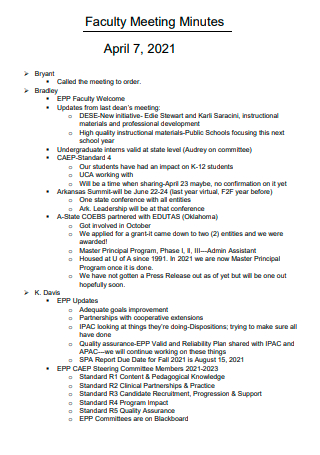
Simple Faculty Meeting Minutes
download now -
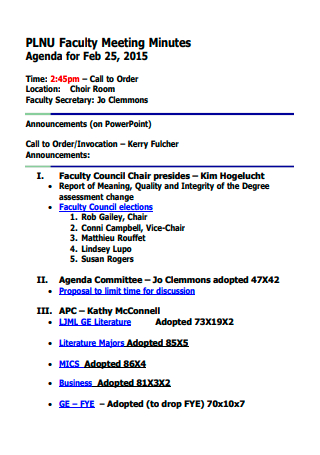
Faculty Meeting Minutes Agenda
download now -

Institute Faculty Meeting Minutes
download now -
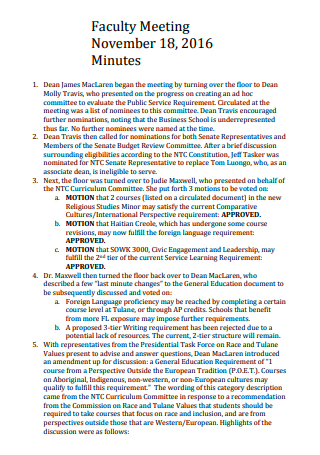
Faculty Meeting Minutes Format
download now -

Faculty Meeting Minutes and Accreditation Reports
download now -

Law Library Faculty Meeting Minutes
download now -
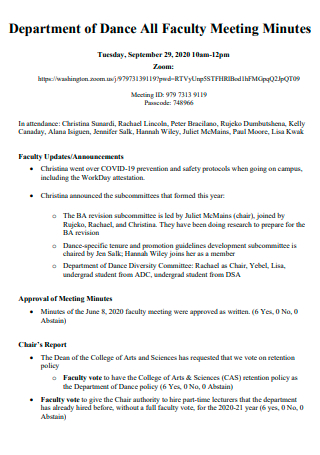
Department of Dance Faculty Meeting Minutes
download now -
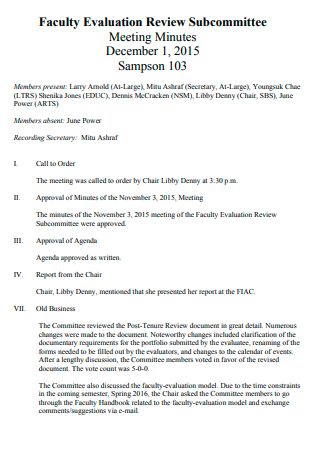
Faculty Evaluation Review Subcommittee Meeting Minutes
download now -
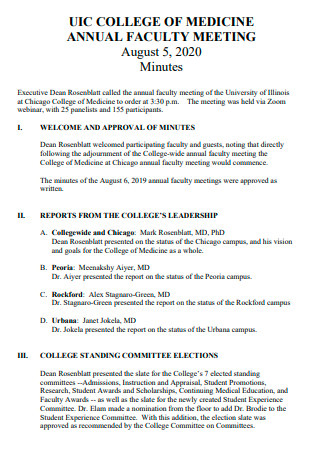
Annual Faculty Meeting Minutes
download now -
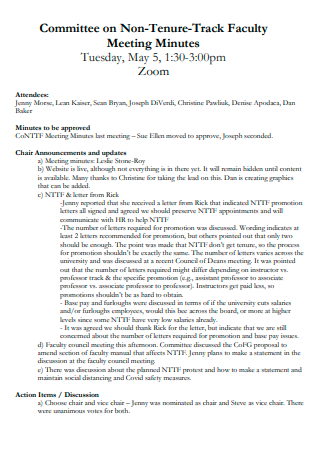
Committee on Non-Tenure Track Faculty Meeting Minutes
download now -

Final Faculty Meeting Minutes
download now -
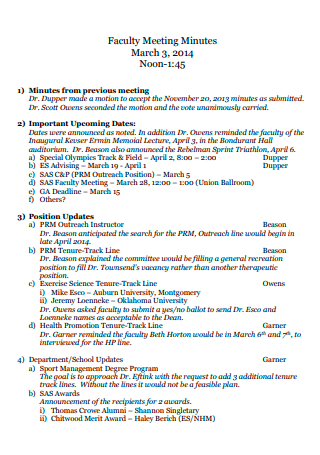
Faculty Noon Meeting Minutes
download now -
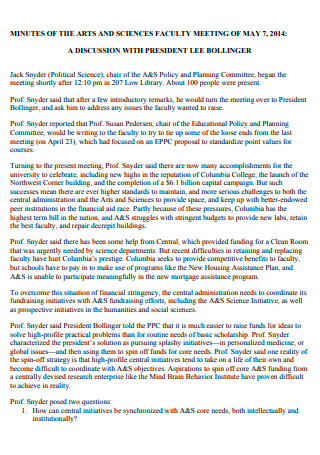
Arts and Science Faculty Meeting Minutes
download now -
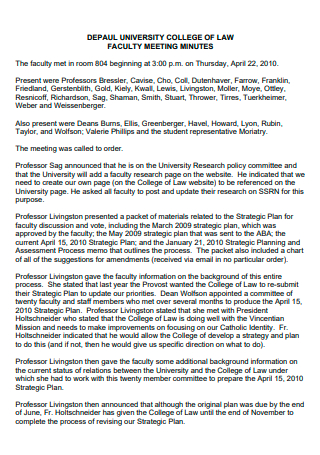
College of Law Faculty Meeting Minutes
download now -
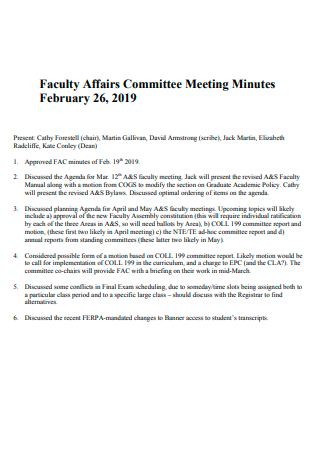
Faculty Affairs Committee Meeting Minutes
download now -

Faculty Assembly Meeting Minutes
download now -
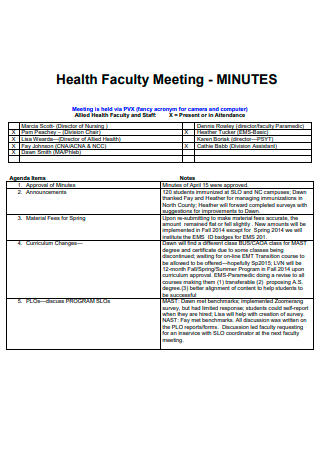
Health Faculty Meeting Minutes
download now -
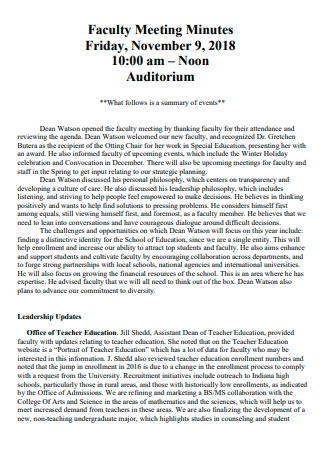
Sample Faculty Meeting Minutes
download now -

Special Faculty Meeting Minutes
download now -
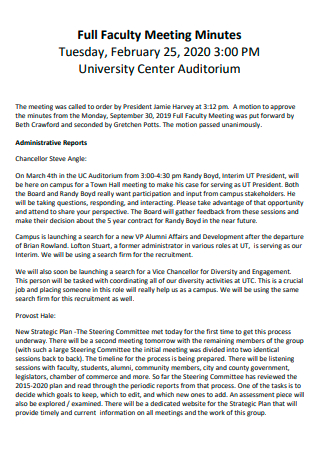
Full Faculty Meeting Minutes
download now -
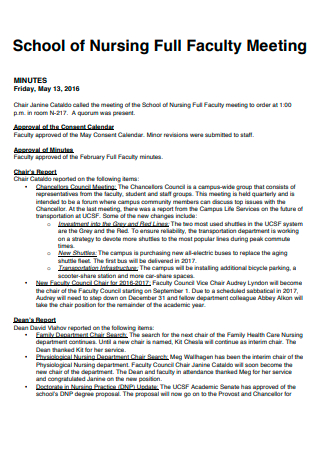
School of Nursing Faculty Meeting Minutes
download now -
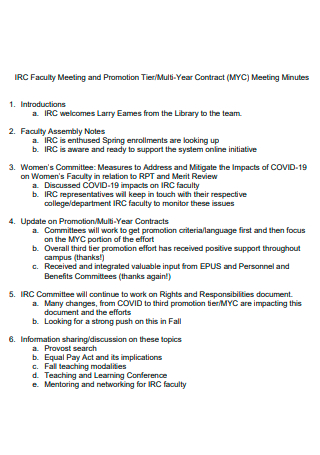
Faculty and Promotion Contract Meeting Minutes
download now -
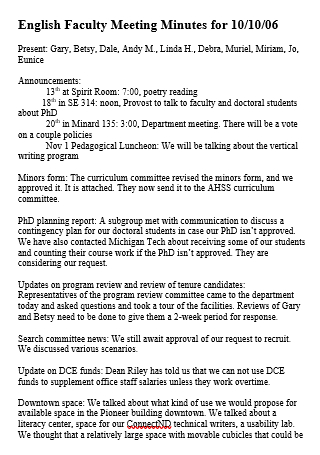
English Faculty Meeting Minutes
download now -
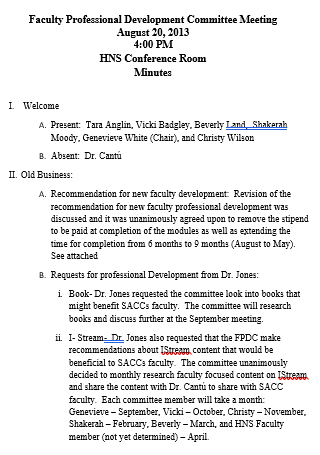
Faculty Professional Development Committee Meeting Minutes
download now -

Faculty Meeting Minutes in DOC
download now
FREE Faculty Meeting Minutes s to Download
39+ Sample Faculty Meeting Minutes
What are Faculty Meeting Minutes?
How Do You Make a Faculty Meeting Meaningful?
Common Ways to Make a Faculty Meeting Productive
What Should be Included in the Minutes of A Faculty Meeting?
What can make a Faculty Meeting effective?
Step by Step Process of Writing a Faculty Meeting Minutes
FAQs
How can new teachers get involved in a faculty meeting with experienced colleagues?
What are the critical components needed for a meeting to be successful?
Can you still take faculty meeting minutes through a video call?
What are Faculty Meeting Minutes?
To understand faculty meeting minutes, we should get to know what is a faculty meeting first. A faculty meeting’s purpose is to discuss various school activities that can and will enhance the school program. Its goal is also to consider important academic matters, listen and come to agreement on how to deal with the reports and proposals to the faculty committees, and to listen and act on the concerns brought about by their students. It is also a good place to share school board decisions involving the teachers in a general way, such as school trips, calendar changes, dress codes, etc. The actions taken and the decisions made that are listed in a formal document by the secretary or designated notetaker during this meeting are what are known as the faculty meeting minutes.
How Do You Make a Faculty Meeting Meaningful?
To get the most out of the meeting period, faculty meetings should also be meaningful, not just a simple gathering of a certain number of individuals who endlessly share around ideas. For a faculty meeting to become meaningful, the principal or dean can set a goal of always being at the forefront of good academic practices, leading by example, and promoting those good practices among the staff. Another sample strategy that can prove to be a massive help is to promote collegial collaboration.
Common Ways to Make a Faculty Meeting Productive
Faculty meetings don’t have to drag a long time. The worst thing that can happen is a meeting taking place over a very long period of time, and by the moment it is adjourned, nothing of value was even learned. Here are some common tips to make a meeting worth the time:
What Should be Included in the Minutes of A Faculty Meeting?
Here are the common things that should be included in writing the minutes of a Faculty Meeting:
What can make a Faculty Meeting effective?
There are several factors that can make a simple faculty meeting very effective and productive. Here are some of them:
Step by Step Process of Writing a Faculty Meeting Minutes
Step 1. Know what to write.
Various universities have different ways of taking down minutes at a faculty meeting. So it is important for the secretary or the assigned notetaker to know what to write and what not to write. Focus should be directed to what the participants of the faculty meeting are discussing, and the secretary should be able to differentiate on what to take down (ex. names of the attendees, venue of the meeting, decisions made, additions to the agenda, etc.) and what not to take down (ex. confidential matters, personal problems, etc.)
Step 2. Know when to just listen.
It is also important to know when should the secretary simply listen to the presenting speaker. Once he/she is confident to know what to write down in the minutes, the best option is to simply listen and concentrate on what topic the speaker is discussing. The best minute takers are usually really good listeners, too.
Step 3. Write objectively.
As the secretary or the notetaker begins to take down meeting notes for the minutes of the faculty meeting, it is important to know that this should be done in an objective manner. Personal takes or opinions regarding the topic being presented should be completely left out of the notes, or if possible, written on a completely different page, away from the main notes for personal purposes. The final document being produced should be written empty of bias. Since the final document has legal liability, it is also important to keep the information written on the minutes as basic as possible to avoid placing the faculty or the entire school into unnecessary legal trouble.
Step 4. Finalize and distribute.
Once the note-taking process is finished and the meeting is adjourned, then the next step is getting the notes transferred or encoded into a formal, essential document while everything is still fresh in the mind. After, the secretary or the notetaker should verify that everything that is encoded in the final minutes document is factual and matches with what was discussed during the faculty meeting proper. When everything is finalized, the formal minutes document should also be distributed to the executive department of the school, and to anyone with approval to receive the minutes of the meeting. The recommendations concerning academic matters that were discussed during the meeting should be forwarded to the school’s head of academic affairs for consideration.
FAQs
How can new teachers get involved in a faculty meeting with experienced colleagues?
To make a faculty meeting effective, proper communication and discussion among faculty members, experienced and new, is key. New teachers can and should be oriented by their experienced peers on the procedures and practices that they take, such as the school bounds, teaching procedures, recess procedures, handling school incidents, and overall student conduct.
What are the critical components needed for a meeting to be successful?
Some of the critical components that are needed to hold a successful meeting of any kind include: Preparation of the meeting, Opening the meeting, Conducting the meeting, Closing the meeting, and the follow-up post-meeting. This is according to several studies done by educators. Setbacks can still be present, because school principals still have the tendency to open and hold the meeting in an authoritarian manner, with very little to no input from the faculty meeting participants.
Can you still take faculty meeting minutes through a video call?
Due to the current pandemic, the schools and universities have resorted to letting their staff work from their respective homes. Although some schools have already reopened, many still don’t have the luxury of doing so. As a virtual meeting is going on via video calls, the secretary or designated notetaker can still do take faculty minutes. Being in a quiet room will massively help when notetaking for minutes, as it enables the secretary to be able to hear the presenter very clearly. Proper communication is still key here, as the secretary should not hesitate to ask for clarification from the speaker regarding their points should the connection be intermittent or completely drop out.
A productive faculty meeting should lay the foundation for the current and future success of the university or school. The meetings that are held will build a culture between the faculty members in which all their ideas can be shared and considered. An effective faculty meeting minutes document will reflect the decisions of the school and its faculty regarding the concerns raised during the said meeting. One should not worry about finding it too difficult in the early days, because as time goes on and experience in writing faculty meeting minutes builds up, it only gets easier. Should you need any help in creating one, don’t hesitate to look at the examples provided above, and use this article as your guide.
